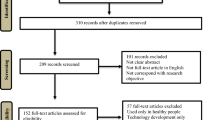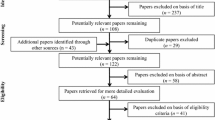Abstract
The study aimed to examine whether modifying the proprioceptive feedback usually associated with a specific movement would decrease the dominance of visual feedback and/or decrease, which appears to be the neglect of proprioceptive feedback in ensuring the accuracy of goal-directed movements. We used a leg positioning recall task and measured the recall error after 15 and 165 acquisition trials performed with both vision and proprioception or proprioception only, under either a normal or a modified proprioception condition (i.e., with a 1-kg load attached to the participants’ ankle). Participant learning was evaluated in transfer with proprioception only. In support of the specificity of practice hypothesis, the recall errors in acquisition were significantly smaller when practice occurred with both vision and proprioception, in either the loaded or the unloaded leg condition, and they increased significantly in transfer when vision was withdrawn. An important finding of the study highlighted that withdrawing vision after 165 acquisition trials had less deleterious effects on the recall errors when practice occurred under the loaded leg condition. Under that modified condition, recall errors in transfer were similar when practice occurred with and without vision, whereas larger errors were observed following practice with vision under the normal proprioceptive condition. Overall, these results highlighted the dominance of vision in ensuring accurate leg positioning recall and revealed that the dominance of vision is such that the processing of proprioceptive feedback may be neglected. Importantly, modifying the proprioceptive feedback has the advantage of reducing what appears to be the neglect of proprioceptive information when movement execution occurs in a visuo-proprioceptive context. Practical considerations for rehabilitation are discussed at the end of the manuscript.



Similar content being viewed by others
Notes
RMSE = \(\sqrt {CE^{2} + VE^{2} }\).
References
Apker, G. A., Karimi, C. P., & Buneo, C. A. (2011). Contributions of vision and proprioception to arm movement planning in the vertical plane. Neuroscience Letters, 503, 186–190.
Blandin, Y., Toussaint, L., & Shea, C. H. (2008). Specificity of practice: interaction between concurrent sensory information and terminal feedback. Journal of Experimental Psychology. Learning, Memory, and Cognition, 34, 994–1000.
Bullock-Saxton, J. E., Wong, W. J., & Hogan, N. (2001). The influence of age on weight-bearing joint reposition sense of the knee. Experimental Brain Research, 136, 400–406.
Coull, J., Tremblay, L., & Elliott, D. (2001). Examining the specificity of practice hypothesis: is learning modality specific? Research Quarterly for Exercise and Sport, 72, 345–354.
Dadarlat, M. C., O’Doherty, J. E., & Sabes, P. N. (2015). A learning-based approach to artificial sensory feedback leads to optimal integration. Nature Neuroscience, 18, 138–144.
Desmurget, M., & Grafton, S. (2000). Forward modeling allows feedback control for fast reaching movements. Trends in Cognitive Sciences, 4, 423–431.
Heuer, H., Klimmer, F., Luttmann, A., & Bolbach, U. (2012). Specificity of motor learning in simulator training of endoscopic-surgery skills. Ergonomics, 55, 1157–1165.
Ivens, C. J., & Marteniuk, R. G. (1997). Increased Sensitivity to changes in visual feedback with practice. Journal of Motor Behavior, 29, 326–338.
Krigolson, O. E., & Tremblay, L. (2009). The amount of practice really matters: further support for the specificity of practice hypothesis. Research Quarterly for Exercise and Sport, 80, 197–204.
Krigolson, O., Van Gyn, G., Tremblay, L., & Heath, M. (2006). Is there “feedback” during visual imagery? Evidence from a specificity of practice paradigm. Canadian Journal of Experimental Psychology, 60, 24–32.
Mackrous, I., & Proteau, L. (2007). Specificity of practice results from differences in movement planning strategies. Experimental Brain Research, 183, 181–193.
Mackrous, I., & Proteau, L. (2015). Is visual-based, online control of manual-aiming movements disturbed when adapting to new movement dynamics ? Vision Research, 110, 223–232.
Proteau, L. (1992). On the specificity of learning and the role of visual information for movement control. In L. Proteau & D. Elliott (Eds.), Vision and motor control (pp. 67–103). Amsterdam: Elsevier.
Proteau, L. (2005). Visual afferent information dominates other sources of afferent information during mixed practice of a video-aiming task. Experimental Brain Research, 161, 441–456.
Proteau, L., & Cournoyer, J. (1990). Vision of the stylus in a manual aiming task: the effects of practice. Quarterly Journal of Experimental Psychology, 42, 811–828.
Proteau, L., Marteniuk, R. G., Girouard, Y., & Dugas, C. (1987). On the type of information used to control and learn an aiming movement after moderate and extensive training. Human Movement Science, 6, 181–199.
Proteau, L., Tremblay, L., & De Jaeger, D. (1997). Practice does not diminish the role of visual information in on-line control of a precision walking task: support for the specificity of practice hypothesis. Journal of Motor Behavior, 30, 143–150.
Robin, C., Toussaint, L., Blandin, Y., & Proteau, L. (2005). Specificity of learning in a video-aiming task: modifying the salience of dynamic visual cues. Journal of Motor Behavior, 37, 367–376.
Rossetti, Y., Desmurget, M., & Prablanc, C. (1995). Verctorial coding of movement: vision, proprioception, or both? Journal of Neurophysiology, 74, 457–463.
Shadmehr, R., Smith, M. A., & Krakauer, J. W. (2010). Error correction, sensory prediction, and adaptation in motor control. Annual Review of Neuroscience, 33, 89–108.
Sober, S. J., & Sabes, P. N. (2005). Flexible strategies for sensory integration during motor planning. Nature Neuroscience, 8, 490–497.
Soucy, M. C., & Proteau, L. (2001). Development of multiple movement representations with practice: specificity versus flexibility. Journal of Movement Behavior, 33, 226–234.
Suprak, D. N., Osternig, L. R., van Donkelaar, P., & Karduna, A. R. (2007). Shoulder joint position sense improves with external load. Journal of Motor Behavior, 39, 517–525.
Toussaint, L., & Blandin, Y. (2010). On the role of imagery modalities on motor learning. Journal of Sports Sciences, 28, 497–504.
Toussaint, L., Robin, N., & Blandin, Y. (2010). On the content of sensorimotor representations after actual and motor imagery practice. Motor Control, 14, 159–175.
Tremblay, L., & Proteau, L. (1998). Specificity of practice: the case of powerlifting. Research Quarterly for Exercise and Sport, 69, 284–289.
Tremblay, L., & Proteau, L. (2001). Specificity of practice in a ball interception task. Canadian Journal of Experimental Psychology, 55, 207–218.
Tremblay, L., Welsh, T. N., & Elliott, D. (2001). Specificity versus variability: effects of practice conditions on the use of afferent information for manual aiming. Motor Control, 5, 347–360.
van Beers, R. J., Sittig, A. C., & Denier van der Gon, J. J. (1999). Localization of a seen finger is based exclusively on proprioception and on vision of the finger. Experimental Brain Research, 125, 39–43.
Yoshida, M., Cauraugh, J. H., & Chow, J. W. (2004). Specificity of practice, visual information, and intersegmental dynamics in rapid-aiming limb movements. Journal of Motor Behavior, 36, 281–290.
Author information
Authors and Affiliations
Corresponding author
Rights and permissions
About this article
Cite this article
Toussaint, L., Meugnot, A., Badets, A. et al. The specificity of practice hypothesis in goal-directed movements: visual dominance or proprioception neglect?. Psychological Research 81, 407–414 (2017). https://doi.org/10.1007/s00426-016-0748-3
Received:
Accepted:
Published:
Issue Date:
DOI: https://doi.org/10.1007/s00426-016-0748-3




